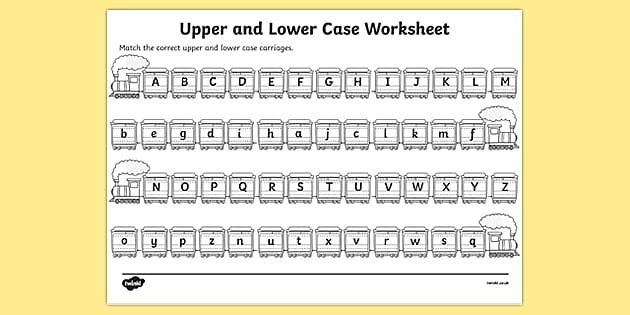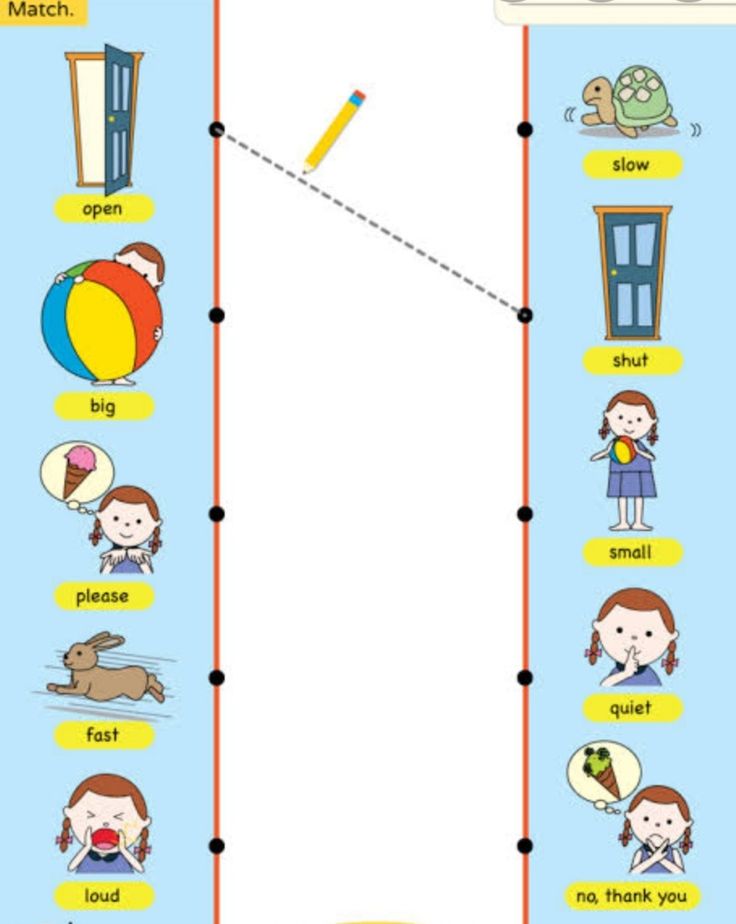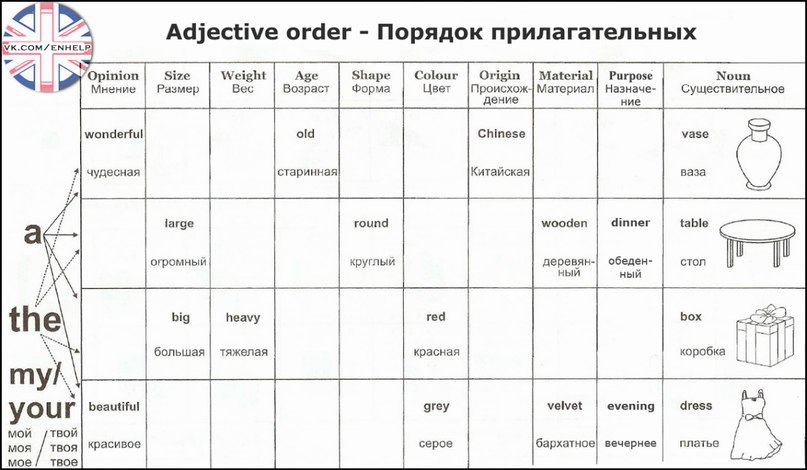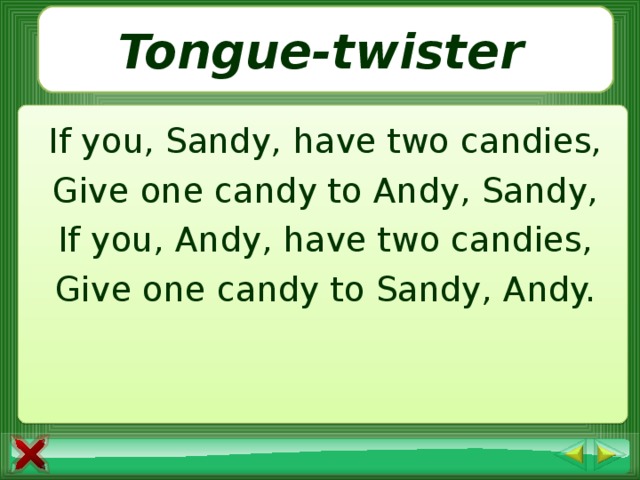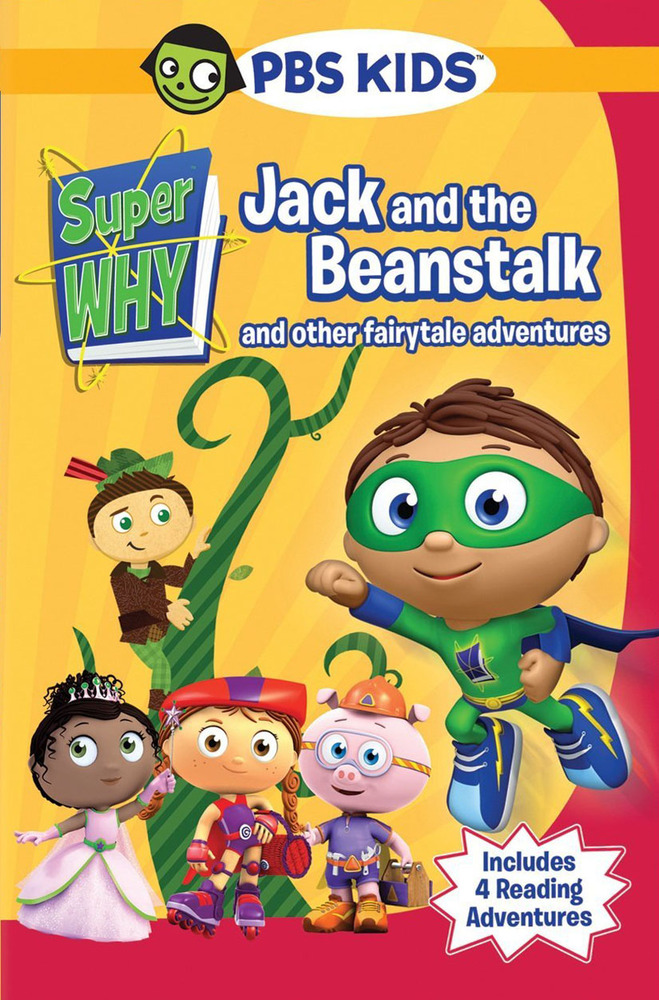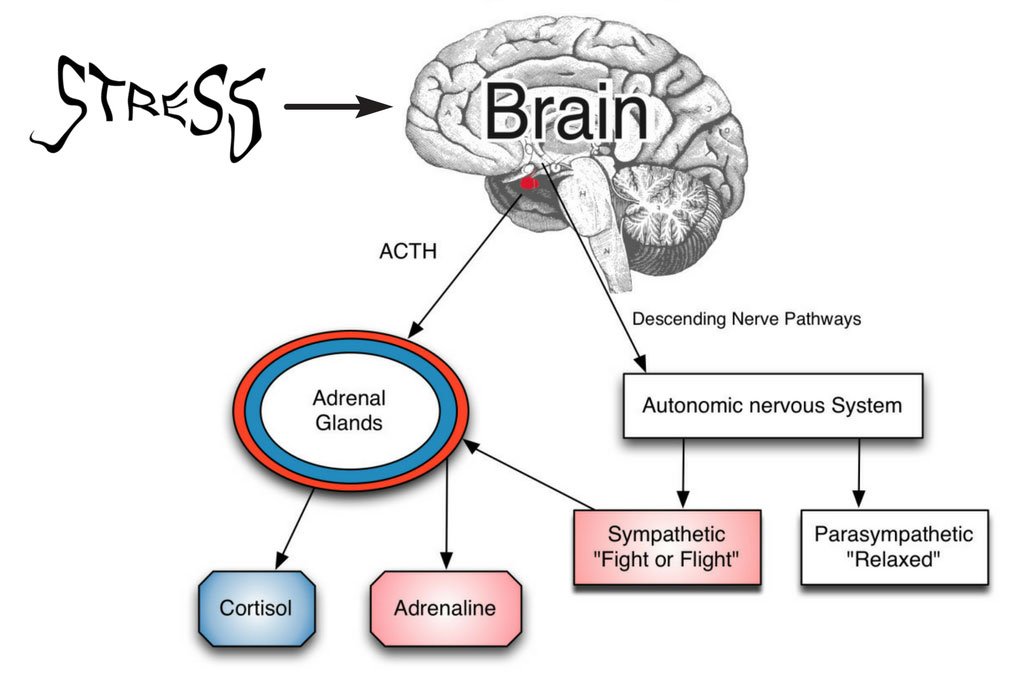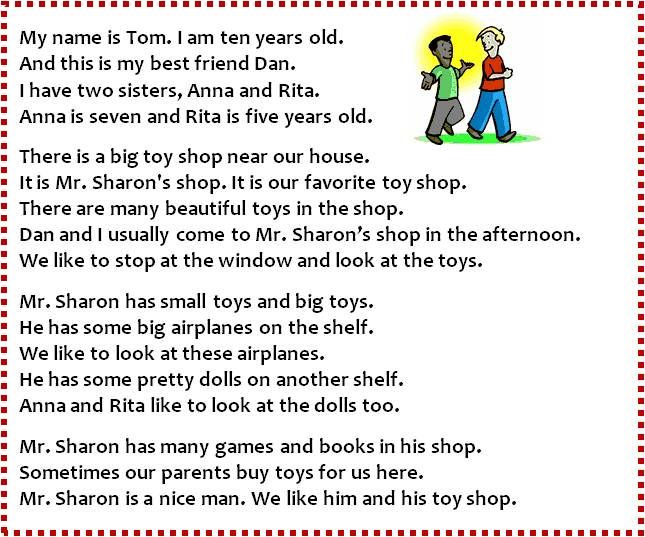How to find syllables
What Is a Syllable? | How to Count Syllables Properly
In today’s lesson, I’m going to answer the question, what is a syllable? And more importantly, I’ll also teach you how to count the syllables inside words.
The topic of counting syllables gets introduced to people in primary school, but it is often poorly taught. Consequently, many people can’t count the number of syllables inside a word properly. To clear up the confusion around counting syllables, I made this lesson! Watch the video version below:
More from Jade Joddle
▶︎ Join my email newsletter (get a free lesson and be notified about special offers).
▶︎ Speak clear and confident English. Take my Clear Accent course. ✔︎
What Is a Syllable?
We will begin with a basic definition of the syllable:
A syllable is a section of a word. The number of syllables equals the number of sections that the word can be split into.
The number of syllables in a word corresponds to the number of sections that ‘stand out’ inside that word. The sounds that stand out are the vowels and syllabic consonants l, m, n. When a vowel sound stands out inside a word (is prominent), it has a kind of magnetic attraction, which is capable of drawing consonants to it.
Vowels can attract consonants to form syllables.Importantly, we are not going to the smallest possible level of detail and counting every individual sound/phoneme in a word. To count the number of syllables in a word, we must count at the level above that. For example, consider the word ‘problems’…
At the smallest level of sound, the word ‘problems’ /ˈprɒb.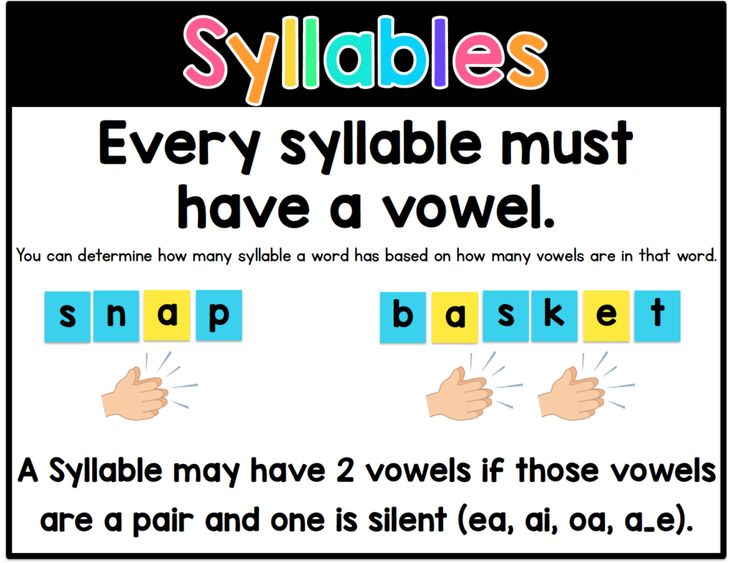 ləmz /contains 8 individual sounds/phonemes. p-r-ɒ-b-l-e-m-z
ləmz /contains 8 individual sounds/phonemes. p-r-ɒ-b-l-e-m-z
If we then zoom out a little, the word ‘problems’/ˈprɒb.ləmz /consists of two syllables: PROB-LEMS.
Finally, if we zoom out further, we can say that the word ‘problems’ /ˈprɒb.ləmz / is a single word.
IMPORTANT: you were probably taught at school that the number of syllables inside a word corresponds to the number of vowels that it contains. However, this is an oversimplification which can lead to mistakes when counting syllables. This is because the syllabic consonants l, m, and n are powerful enough to form syllables that don’t require a vowel. Examples of words containing syllabic consonants are:
little → /ˈlɪtl̩/ (2 syllable word)
mmm → /m̩ː/ (1 syllable interjection with no vowel sound)
button → /ˈbʌtn̩/ (2 syllable word)
Notice that in the example words above, the mark under the l̩, m̩, and n̩ symbols is there to denote a syllabic consonant. If you have never seen these strange phonetic symbols before, don’t be overwhelmed by them! Most dictionaries don’t think that it is necessary to go into this level of detail when transcribing words.
Why Knowing About Syllables Is Important for Your English
Learning how to properly count the number of syllables inside a word benefits your English in a number of ways:
- PRONUNCIATION BENEFITS: Understanding syllables makes your English sound much more natural because it improves your sense of English rhythm. For upper-intermediate and advanced students – you can’t apply word stress properly unless you have a good understanding of syllables.
- READING BENEFITS: Correctly segmenting words into syllables makes you a faster reader who can tackle extremely long words such as ‘antidisestablishmentarianism’ (12 syllables!).
- SPELLING BENEFITS: Breaking up words into chunks/syllables makes you a far better speller.
- ARTISTIC BENEFITS: Knowing about syllables will make you a much better poet!
Why Counting Syllables Is Difficult for Some Students
Counting the number of syllables inside a word is difficult for some students of English.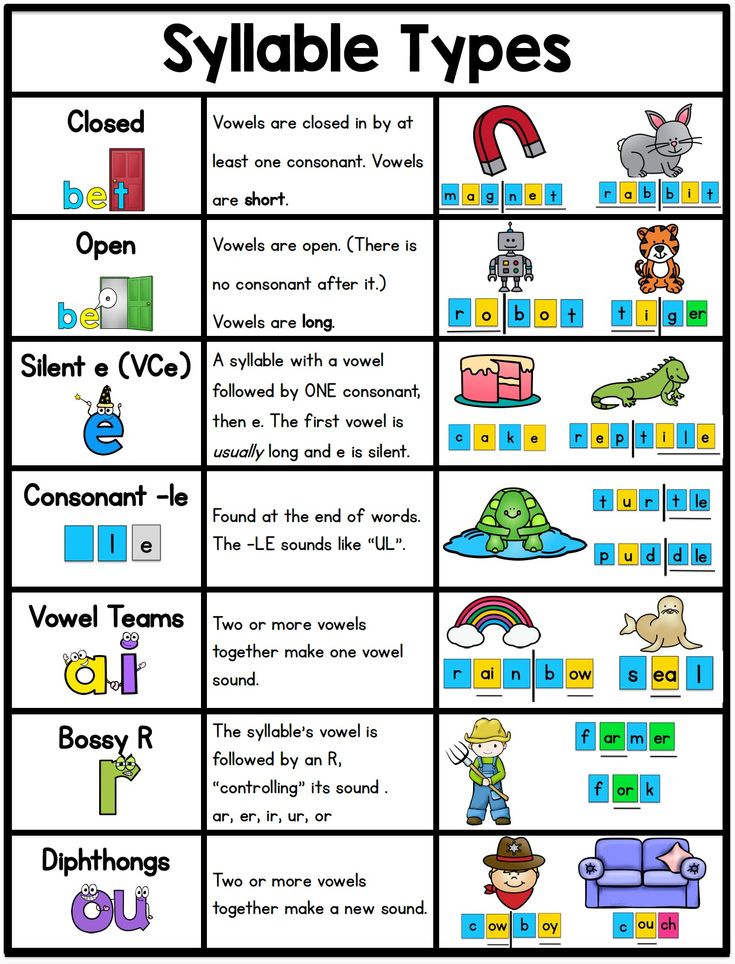 There are a few main reasons for this.
There are a few main reasons for this.
Firstly, the length of English syllables is uneven. Some are short and some are long. This could be different to how syllables operate in your native language. Take for example the words ‘a’ and ‘strengths’. Remarkably, both words are one-syllable words!
A second reason is that the widely taught clapping technique for counting syllables doesn’t always work.
A third reason that some students struggle with the topic is because they have invented their own pronunciation of English words! This happens a lot to students who mostly taught themselves English by reading books and following along with subtitles. This leads them to pronounce words according to the number of vowels that are present in the spelling of a word, which in many cases doesn’t correspond to the pronunciation. A common example of this is found in the one-syllable word ‘called’ /kɔːld/, which many students incorrectly pronounce as ‘CALL-ED’ (two syllables).
And lastly, students with audio processing difficulties find it more difficult than most to break words up into syllables.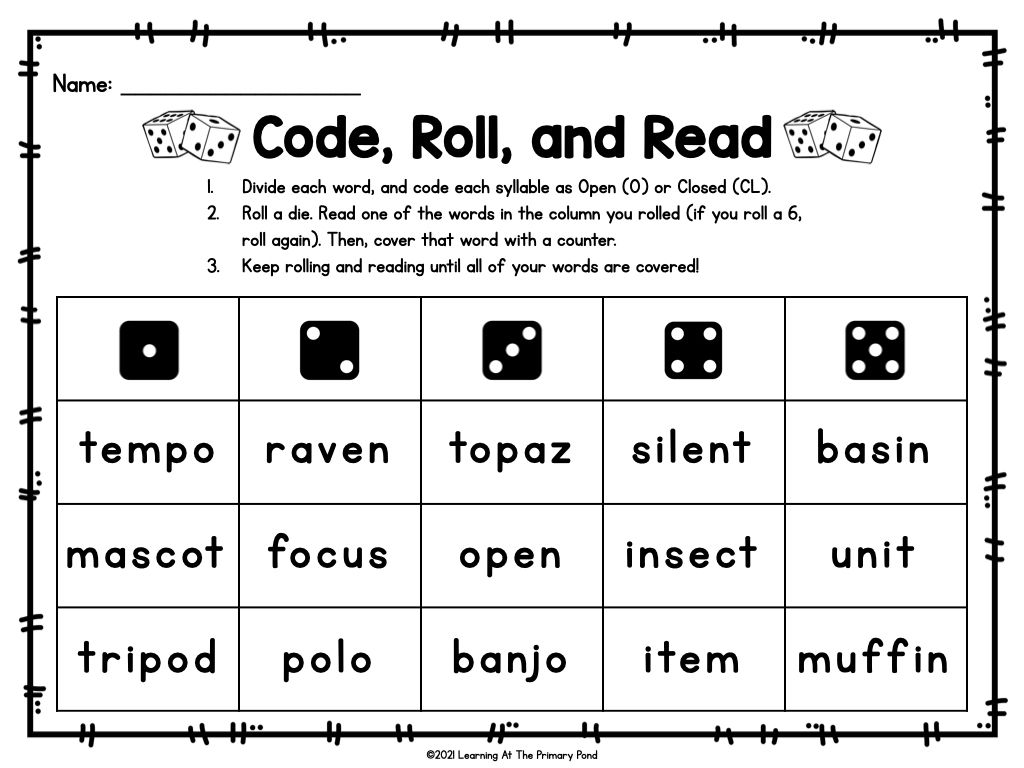 This is because they ‘hear’ sounds differently, which makes the boundaries between syllables seem blurry or unclear. For help with this issue, see my English Jade course.
This is because they ‘hear’ sounds differently, which makes the boundaries between syllables seem blurry or unclear. For help with this issue, see my English Jade course.
How to Count Syllables
The best way to learn how to count the number of syllables in a word is to follow along with a demonstration. Watch the video at the top of the page, skipping to 5.10 min to practise counting syllables with me.
Let’s talk now about the solution… How do we make counting the number of syllables in words easy? Here are some factors we must consider:
- Sound exploration: The first step is exploring the sounds inside words; this requires practice.
- Syllable breaks: We have to learn to recognise where syllables break. Some rules and patterns can help us with this, but there will still be some ‘grey areas’. At times it is unclear where a syllable break occurs.
- Open syllables VS closed syllables: We also have to know the difference between two types of syllables, as explained below.
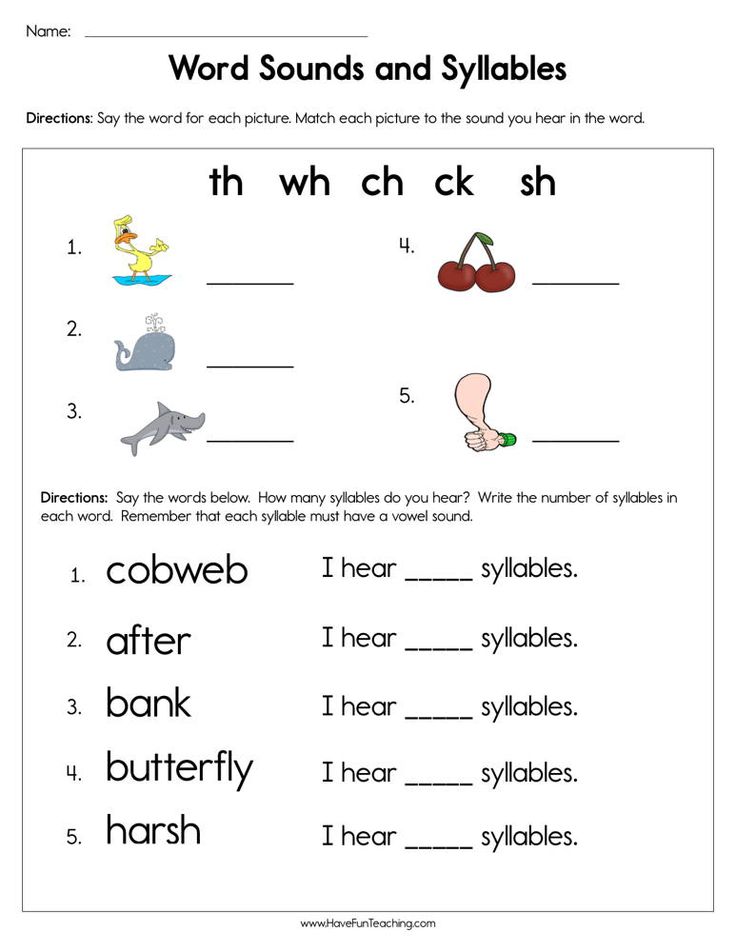
Open Syllables
An open syllable describes a syllable in a word that is not followed by a consonant sound. This type of consonant is easy to identify at the end of a word, but can also occur in other positions. For example, the word ‘see’ /siː/ contains a vowel that is not followed by a consonant. This makes it an open syllable word. Now consider the word ‘seed’ /siːd/, which is a closed syllable word because it ends with a final /d/ consonant. The words ‘see’ and ‘seed’ are both one-syllable words.
It’s easy to count the number of syllables in words that consist of open syllables. Even the unreliable clapping technique to count syllables works for words like this.
Open Syllable Examples (1 Syllable in Length) ➔ see, by, there
Open Syllable Examples (2 Syllables in Length) ➔ before, later, coma
Closed Syllables
Words that contain closed syllables are more difficult for us to count. A closed syllable refers to a vowel that is followed by one or more consonants.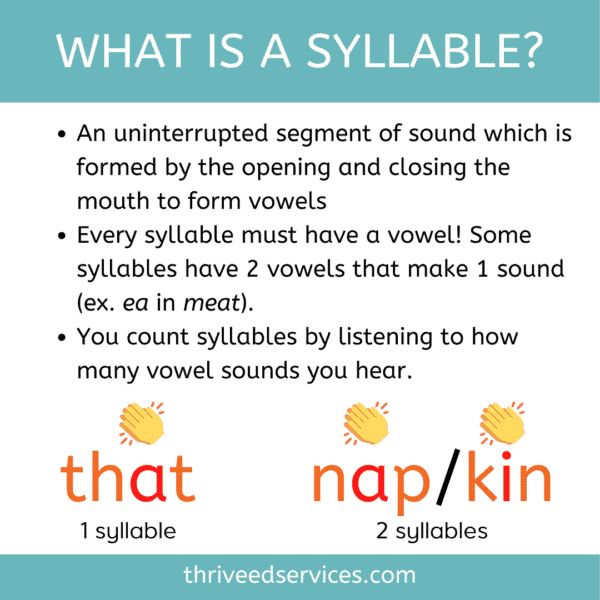 Take for example the closed syllable word ‘his’ /hɪz/. We have the consonant /h/ before the vowel and a /z/ after it. The vowel /ɪ/ is in the middle of the syllable, making three sounds in a kind of sandwich.
Take for example the closed syllable word ‘his’ /hɪz/. We have the consonant /h/ before the vowel and a /z/ after it. The vowel /ɪ/ is in the middle of the syllable, making three sounds in a kind of sandwich.
Closed Syllable Examples (1 syllable in length):
- bag /bæg/
- need /niːd/
- make /meɪk/
- part /pɑːt/
- could /kʊd/
- search /sɜːʧ/ *Notice how there are 6 letters in the spelling, but it’s still only one syllable.
- earth /ɜːθ/
Tip: When counting syllables, say each word as naturally as you can. If your pronunciation is too slow and perfect, it can confuse your brain!
Jade Joddle
Closed Syllable Examples (2 Syllables in Length) ➔ sentence, children, mountain.
The place where the syllables break is shown here with a dash ➔ sen-tence chil-dren moun-tain
The three words above have a common pattern. Notice that the syllables break where two consonants meet.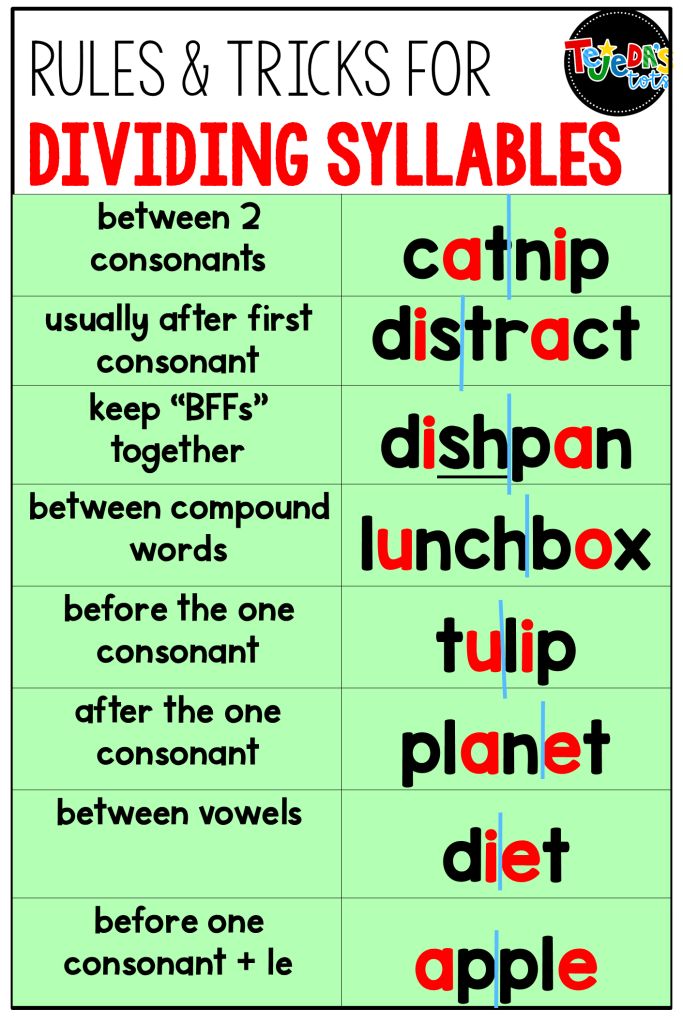 Also, pay special attention to the word ‘mountain’ because this word shows us that a single vowel sound can be spelt with more than one letter.
Also, pay special attention to the word ‘mountain’ because this word shows us that a single vowel sound can be spelt with more than one letter.
Finally, we will look at two words in closer detail…
FRIENDS /frendz/ – Think of the vowel in the word as a magnet to which consonants can be attracted. In the case of ‘friends’, we have two consonants before the vowel and three after it, which creates a complex syllable. It is common to simplify the pronunciation of this word by dropping the /d/ ➔ /frenz/.
STRENGTHS /streŋkθs/ – This special word provides an example of the most complex syllable that can be created in English! It has three consonants before the vowel, and four after the vowel. This is a very difficult word to pronounce, even for most native speakers. If you want to cheat with the pronunciation, you can say /strenθs/ instead (non-standard pronunciation).
Thank you for learning to count syllables with me!
Extend Your Learning
▶︎ Learn more about English rhythm by practising the schwa sound.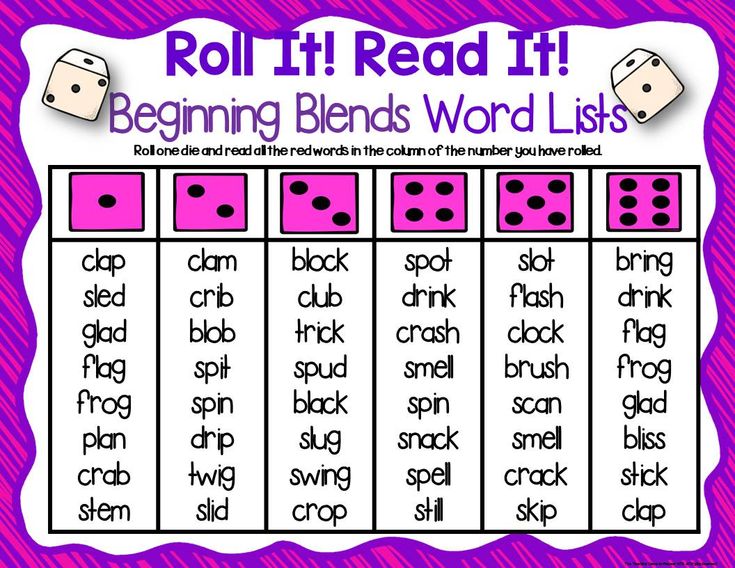
▶︎ Advanced students are advised to watch my lesson on the confusing topic of syllable breaks…
Fun Ways to Count Syllables [+ video]
by Marie Rippel
If your child has trouble counting syllables, or if you are teaching this concept for the first time, this post is for you! Read on to discover four fun ways to count syllables—and while you’re at it, be sure to check out all the extra practice activities and download a free printable “Count the Syllables” game.
But first, a quick definition …
What Are Syllables?
A syllable is a “word chunk” that contains a single vowel sound. A word may have one, two, or even more syllables. For example:
- bat has one vowel sound and therefore one syllable
- sticky has two vowel sounds and therefore two syllables
- south has one vowel sound—/ow/—and therefore one syllable
Four Easy Ways to Count Syllables
Most of us learned to count syllables with the first method below, the Clap Method. But for a little extra variety and a lot of extra fun, I’ve included three other effective methods. If your child just doesn’t “get it” with one of the methods, take a short break and then try a different one!
The Clap Method. The Clap Method is the most common way to teach syllable counting, and it works well for most students. Say the word and clap the syllables, like this:
Your browser does not support the video tag.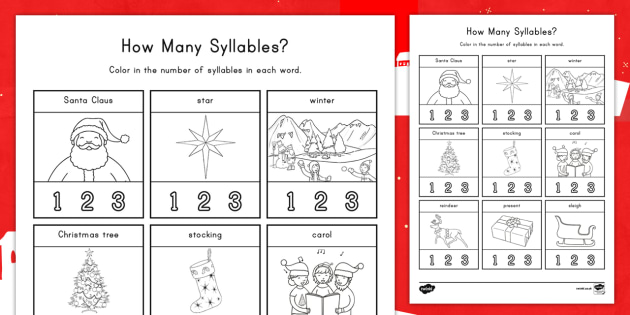
The Hum Method. With the Hum Method, you hum the word instead of saying the word. Count the number of hums.
Your browser does not support the video tag.The Talk-Like-a-Robot Method. When you use the Talk-Like-a-Robot Method, you pretend you’re a robot and say the word in a robotic tone, with a pause between each word chunk.
Your browser does not support the video tag.The Jump Method. Get active! For each syllable, jump in place. Croc-o-dile would be three hops. Hap-py would be two hops.
Your browser does not support the video tag.
Count Syllables with this Adorable Game!
Your child can use any of the four methods above (Clap, Hum, Talk-Like-a-Robot, or Jump) to practice counting syllables with this free printable game.
Count Syllables with SIX Fun Activities
Counting syllables is an important phonemic awareness activity, and that’s why we teach it several different ways in the All About Reading and All About Spelling programs. Children who have acquired this skill generally learn to read and spell much more easily. But don’t despair if your child doesn’t pick up this skill right away! It’s a rather abstract concept that can take time and repetition to sink in.
Children who have acquired this skill generally learn to read and spell much more easily. But don’t despair if your child doesn’t pick up this skill right away! It’s a rather abstract concept that can take time and repetition to sink in.
Here are some additional activities that can help your child identify syllables.
- Sing simple songs with a STRONG BEAT that your child knows.
For example, “Mary Had a Little Lamb.” Clap out each beat in the song like this: “Mar – y – had – a – lit – tle – lamb – its – fleece – was – white – as – snow.” Or you could try beating out the rhythm on a homemade drum (box and spoon, or oatmeal container and chopsticks). Call it music class, and work on it a little each day. Be sure to pick songs in which each syllable is sung on only one beat.
- Play a robot game with your child.
Your child gives you a word, and you say it in your best robotic voice, separating the syllables. Then switch roles—you give your child a word to try.
 Have a contest to see who can sound the most like a robot!
Have a contest to see who can sound the most like a robot! - Clap the syllables in compound words.
Clap once for foot, once for ball, and then put it together and clap twice for football. Other compound words that work well include cobweb, backpack, rainbow, toothbrush, cupcake, popcorn, and airplane. You can get some extra mileage out of this activity by using it as you teach and practice compound words, too!
- Turn mealtime into practice time.
At mealtime, use the food on your plate as inspiration for a syllable counting game. One at a time, each family member announces what he is eating. As you say what you’re eating, playfully break up the words into chunks. “I’m eating a pic-kle!” “Would you like some spa-ghet-ti?” “Please pass the sal-ad.“
- Play “going to the zoo.”
Take turns calling out animal names and, if possible, the sounds they make.
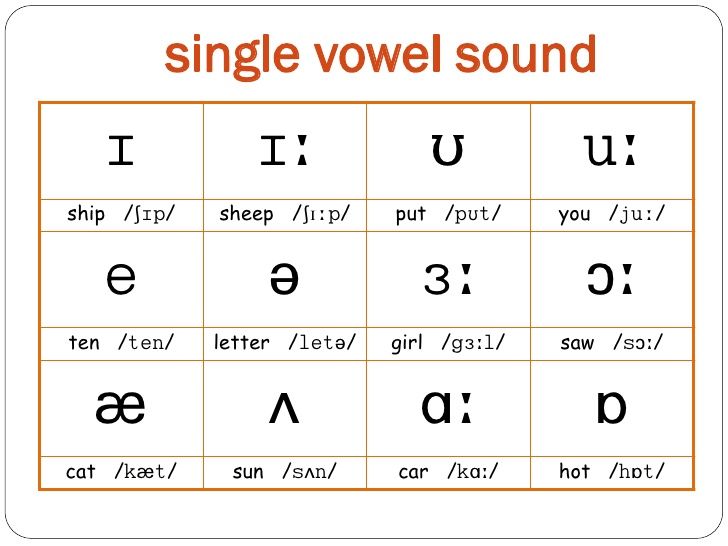 Then everyone can jump, beat, or clap to the syllables. Here are a few examples: “I went to the zoo, and I saw a kan-ga-roo.” “I went to the zoo, and I saw a ze-bra!” “I went to the zoo, and I saw a tur-key, and the tur-key said, gob-ble-gob-ble!”
Then everyone can jump, beat, or clap to the syllables. Here are a few examples: “I went to the zoo, and I saw a kan-ga-roo.” “I went to the zoo, and I saw a ze-bra!” “I went to the zoo, and I saw a tur-key, and the tur-key said, gob-ble-gob-ble!” - Clap the syllables in the names of friends and family members.
This is also a wonderful way for your child to work on remembering all his relatives’ names!
Keep It Fun!
Above all, keep your syllable counting practice light and playful, and if your child doesn’t understand right away, try again in a week or so with a different method or activity. Need a reminder? Download the handy chart below and hang it right on your fridge!
Does your child know how to count syllables? Which of these activities have you tried?
Dividing words into syllables - rules, examples, schemes
Dividing words into syllables is performed in accordance with the number of vowels, and also taking into account the peculiarities of the sound composition of words.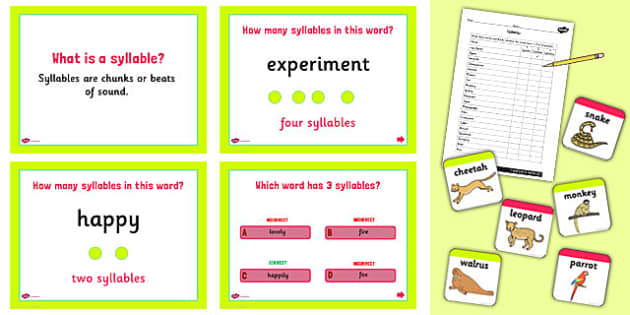
This article will focus on the phonetic syllable, how to correctly divide words into syllables. We take into account that the phonetic division into syllables does not always coincide with the spelling of words.
What is a syllable?
In speech, all words of the Russian language consist of minimal sounding units - syllables. Let's define what a phonetic syllable is.
Definition
The phonetic syllable is the smallest unit of speech that consists of a vowel or a vowel with one or more consonants. The syllable is pronounced with one push of exhaled air.
A vowel forms a syllable. A syllable always has only one vowel. It can independently create a phonetic syllable, as well as in combination with one or more consonants. The consonants cluster around a single vowel. In this regard, according to the sound composition, three types of syllables are distinguished:0003
1. The syllable is one vowel sound:
- A-DRES
- and-dollars O-Strov
- U-Kor
- E-TUD 9,0002 2 .
- ARO-TO
- CO-LO-MA
- beautiful
- stars
- bargain
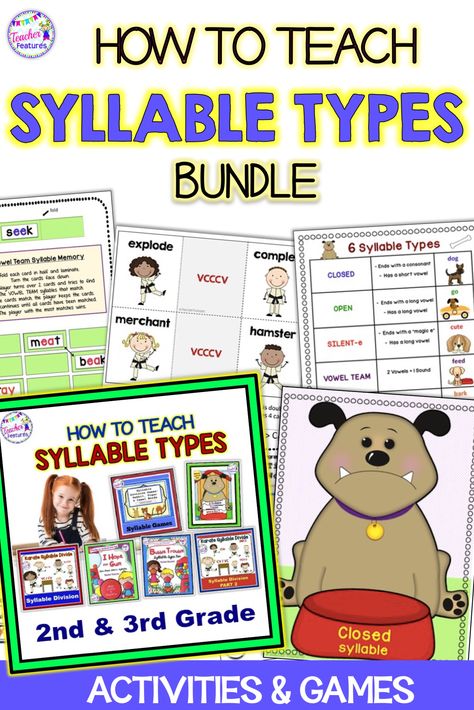 The syllable is a vowel with a consonant:
The syllable is a vowel with a consonant: 3. The syllable forms a vowel with several consonants:
Open and closed syllables
Syllables are open and closed. In the words of the Russian language, most syllables are open. Open syllables organize all vowels alone or in combination with a consonant sound:
Closed syllables form all consonants at the end of words:
- nail
- cover
- blue
- steam-cart 902
Unpaired voiced consonants [d'], [l], [l'], [m], [m'], [n], [n'], [p], [p'] can form a closed syllable in any phonetic position: at the beginning, in the middle and at the end of words:
- zer-ka-lo
- Bol-tic
- sa-rai-chik
- sa-ra-fan .

How to properly divide words into syllables?
Words are divided into phonetic syllables according to the number of vowels. A word contains as many syllables as it has vowels. One vowel sound surrounded by consonants creates a monosyllabic word that is not divided into syllables:
In order to be able to divide a word into syllables, it must contain at least two vowels that form disyllabic words: -face.
If the sonorant consonant is between two vowels , then it goes to the next syllable:0024 ko-ryst
When dividing into syllables, we take into account that the syllable ends with a vowel, and the group of subsequent noisy consonants, in combination with a sonorant sound or without it, departs at the syllable boundary to the next phonetic syllable:
- bottle
- building.
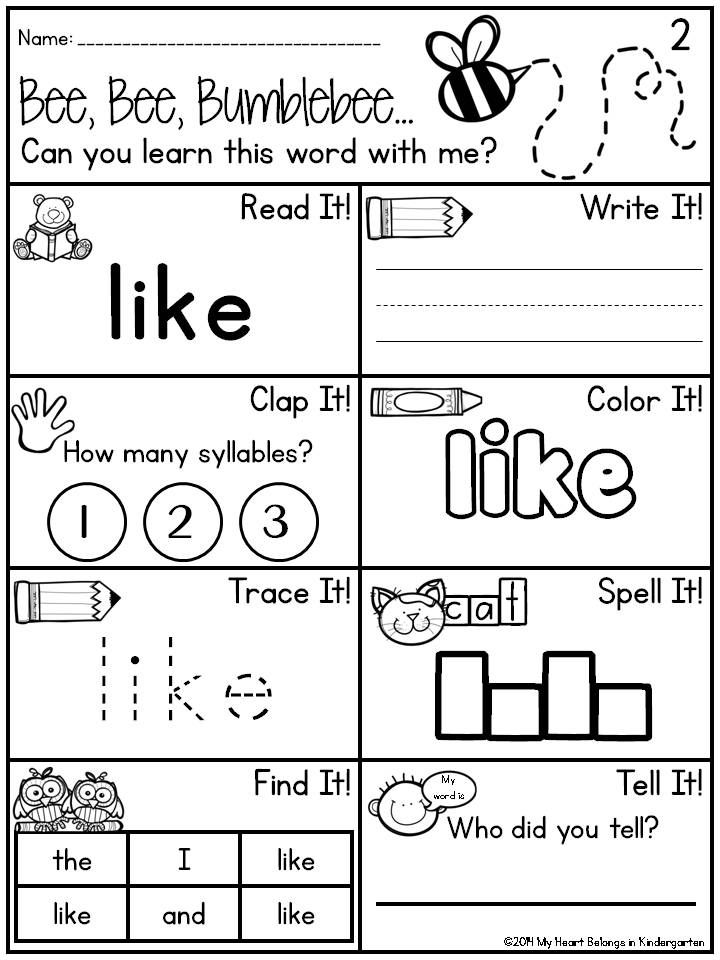
Only unpaired voiced consonants in the middle of a word can close a syllable:
- Al-Fa-Vit
- Stroy
- Kvar-Tal
- LAN-DI-SHE
- Be-SSHUM.
If the word has the same consonants, then they begin the following phonetic syllable:
- PRO-gram
- TE-NEN-EXIS
- -ra-llel.
This syllable is phonetic and does not coincide with orthographic hyphenation of words with double consonants.
letters “Y”, “B”, “Kommersant” owns the syllable, after which they write:
- Rei
- Clap-I
- Use- yum.
Let us indicate the order of dividing words into syllables using the following algorithm.
Algorithm for dividing words into syllables
- read the word;
- emphasize vowel sounds;
- count the number of vowels;
- let's see if the word has double consonants, unpaired voiced consonants, "b" or "b" ;
- we divide the word after each vowel into syllables, taking into account the indicated features.
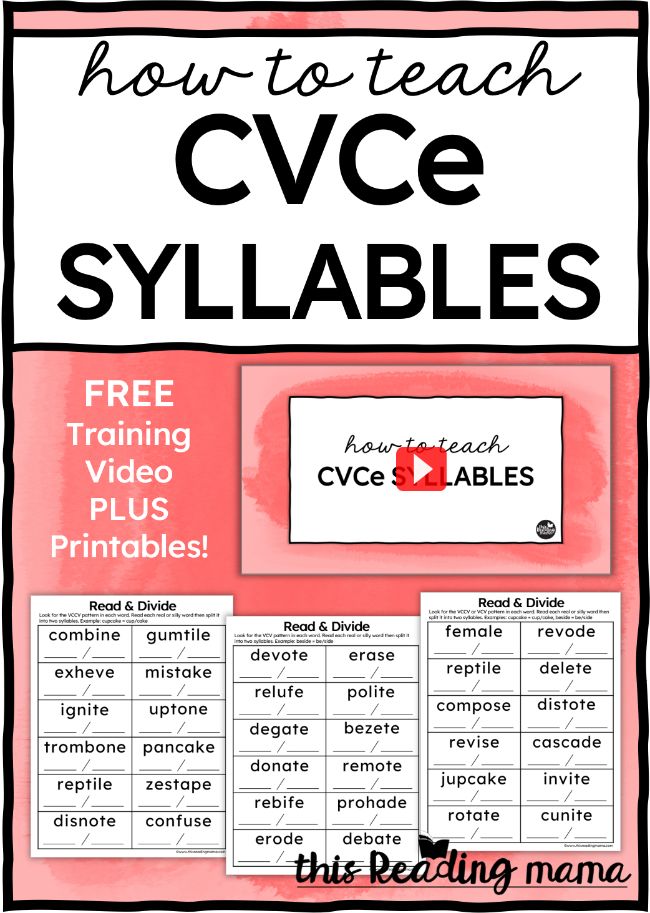
Examples
1. nightingale
This word has 4 vowels that form the same number of syllables. A soft dividing sign is written in the middle. We divide the word into four phonetic syllables. We leave a soft sign after the consonant, indicated by the letter "v" :
so-lov-i-ny
In this word, two syllables are open, and the third and fourth syllables close respectively the voiced consonant "v" and the unpaired voiced consonant, indicated by the letter "th" » .
In accordance with this division into syllables, we transfer this word from one line to another in three ways:
2. participation
In this word, we indicate 4 vowel sounds that organize four phonetic syllables:
u-part-e
All syllables are open. The first and last syllable form vowels on their own. The third syllable is a vowel with noisy consonants.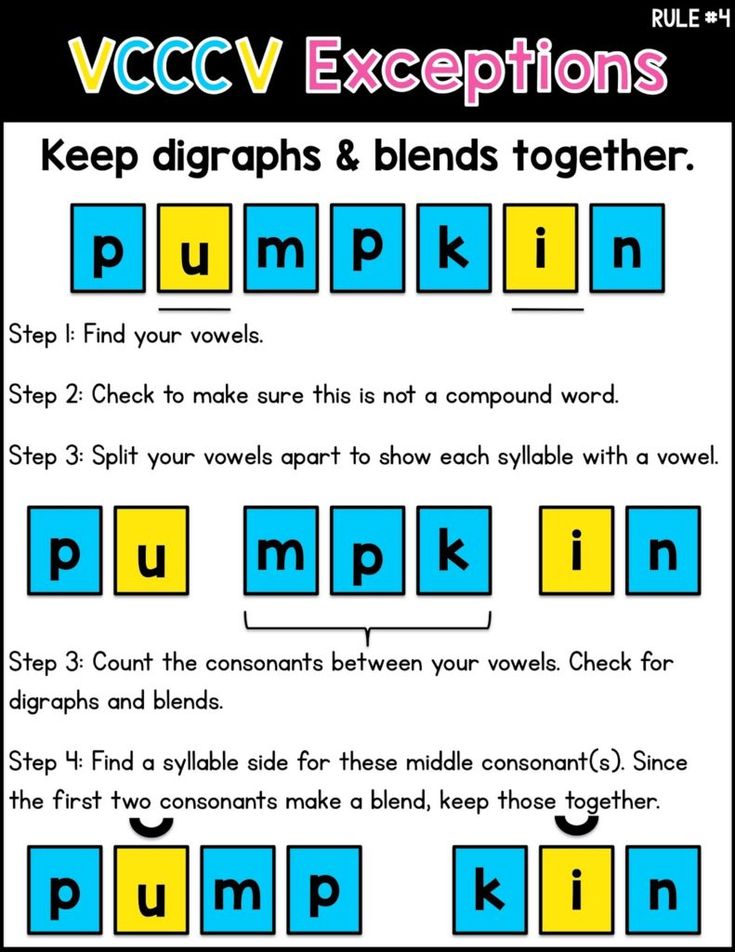
In accordance with this phonetic syllable division, a word cannot be transferred, since one letter, even constituting a syllable, does not remain on the line and is not transferred to the next. Let's attach them to the next and previous syllable and get the correct variant of word transfer by syllables:
participation
Video "Dividing words into syllables"
Dividing words into syllables online
Slogi.su is the most convenient and fastest service for dividing any Russian words into syllables. The service can highlight syllables both in individual words and in the text. We do not have a ready-made dictionary of words with pre-selected syllables, we determine syllables in words automatically.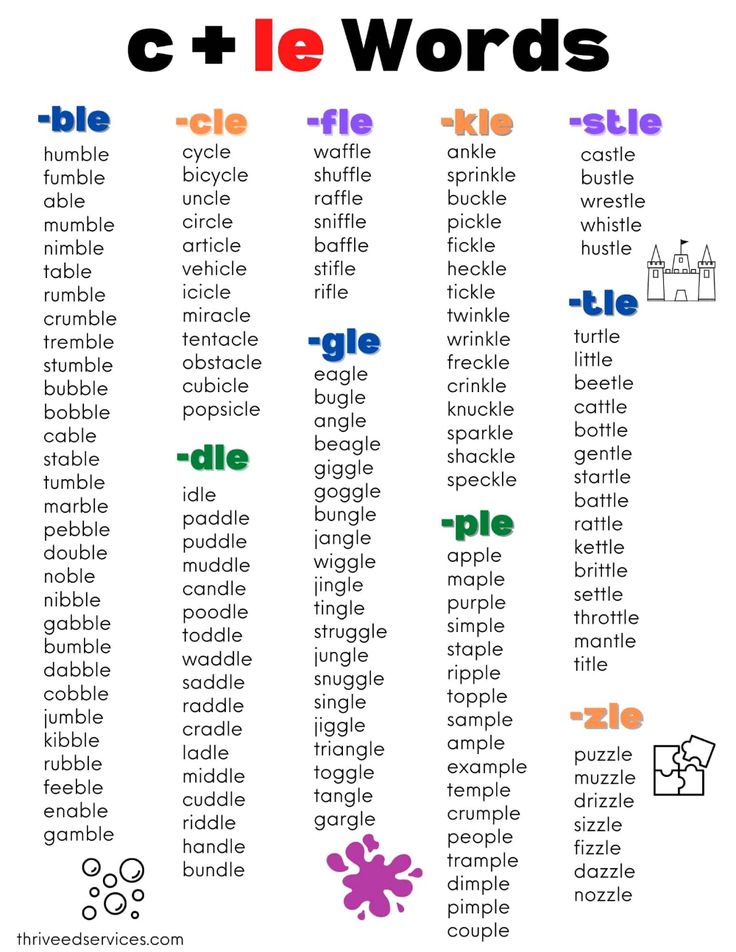 This means that you can enter the word of the Russian language in any number, gender, case and any other form of declension of the word. In addition to the analysis, we give information on each selected syllable in a word - the type of syllable, the division rule. The division into syllables on the site is carried out taking into account the modern rules of the Russian language of the school curriculum (traditional school) and the program with in-depth study. If there is a difference in the syllables of the two programs, explanations are given on the word page.
This means that you can enter the word of the Russian language in any number, gender, case and any other form of declension of the word. In addition to the analysis, we give information on each selected syllable in a word - the type of syllable, the division rule. The division into syllables on the site is carried out taking into account the modern rules of the Russian language of the school curriculum (traditional school) and the program with in-depth study. If there is a difference in the syllables of the two programs, explanations are given on the word page.
Syllables in a word Syllables in a text What is a syllable? Rules for highlighting words Examples of words
Select syllables in a word
To get the syllables in a word, enter the word below. The division is carried out according to the rules of the school curriculum and in-depth study of the Russian language. You can enter only one word and only in Russian letters. Foreign letters, numbers, spaces and other characters are not allowed.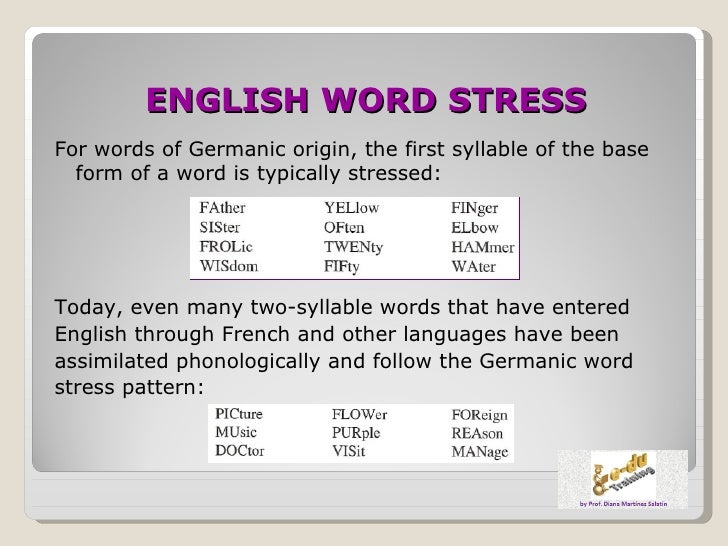
Select syllables in the text
If you need to syllable all words in the text, use the form below. With the help of the form, it is convenient to bring the text of the song to the karaoke format, prepare a children's story for reading by syllables, break words into syllables for foreigners and for other useful needs.
Syllable
A syllable is the smallest unit of speech spoken. Syllables are formed only by vowels, so the number of syllables is equal to the number of vowels in a word. Consonants "adjoin" one or another vowel in accordance with the rules of division into syllables that have developed in the course of the development of the Russian language. The syllable rules describe the correct way to parse words into syllables.
Syllables are: open and closed, covered and uncovered. An open syllable ends in a vowel, a closed syllable ends in a consonant. A covered syllable begins with a consonant, an uncovered syllable begins with a vowel.
Rules for syllable emphasis
General approaches to syllable emphasis in words for traditional and advanced learning are described below.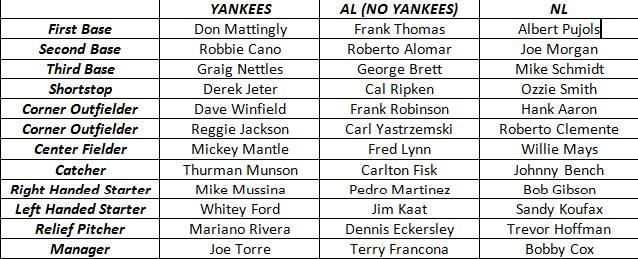 For detailed materials with explanations and examples, see the rules for dividing words into syllables.
For detailed materials with explanations and examples, see the rules for dividing words into syllables.
Traditional school
The main rule of the regular school curriculum, which the child is guided by: how many vowels, so many syllables. When transferring words, they are guided by the rules: we transfer the word by syllables, you cannot leave one letter on the line. These rules are known to all.
When dividing a word into syllables, you can use the method of pushes: put your palm to your mouth and feel the pushes of air while pronouncing the word. Or we imagine a candle in front of us: how many times the flame sways, so many syllables. For some words with a flow of consonants, this option is not always suitable.
Different elementary schools have different principles for teaching syllable division. In some schools, they are taught to visually divide a word into parts - bundles of vowel + consonant (or vowel + several consonants). In other schools, they teach you to pronounce the word with pauses in a convenient way.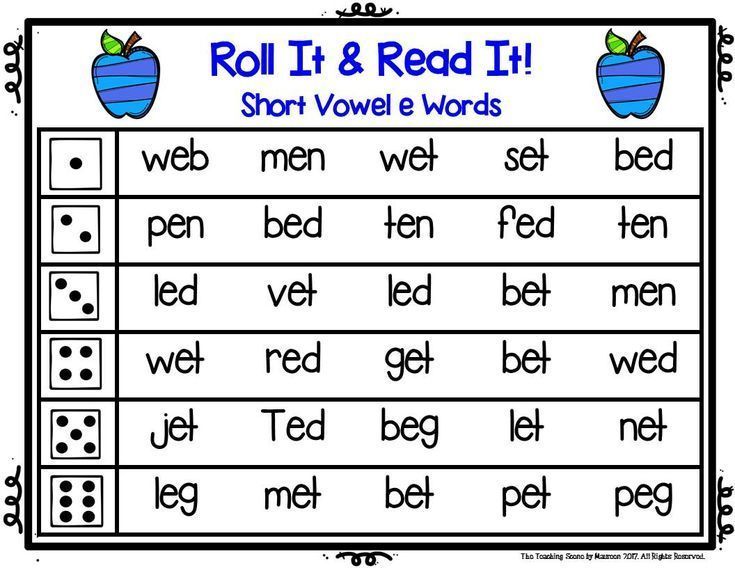 Pauses also create places of division of syllables.
Pauses also create places of division of syllables.
School of in-depth study
In schools of in-depth study of the Russian language and in the programs of institutes, cases are analyzed when words are transferred not by syllables, that is, the transfer syllable does not coincide with the phonetic syllable.
The division of a word into syllables occurs in such a way that the syllable is pronounced in ascending order: from a voiceless pronunciation to a voiced one. Therefore, syllables of several sounds always begin with a voiceless consonant and end with a vowel. For example: mail (but not mail), mo-shka (but not mosh-ka). A syllable may end in a voiced consonant (sonorant p, l, m, n), which sounds less voiced than a vowel, but louder than a voiceless consonant. For example: bul-ka, var-ka.
Examples of words
We select examples of words broken down into syllables according to various criteria that are most in demand among site visitors. Collections will help you quickly find the right words, rather than inventing and remembering them. Popular lists are words of 2-5 syllables and words with given syllables. Thanks to the collections, you can find examples of words by mask, which is useful when preparing homework, solving crossword puzzles, compiling wall newspapers and other educational and entertaining tasks.
Popular lists are words of 2-5 syllables and words with given syllables. Thanks to the collections, you can find examples of words by mask, which is useful when preparing homework, solving crossword puzzles, compiling wall newspapers and other educational and entertaining tasks.
By syllables
Words with
syllables 1 syllable2 syllables3 syllables4 syllables5 syllables6 syllables7 syllables8 syllables9 syllables
With syllables
Words with syllables:
do--doses--zhi--zik--cas--kos--kra--mer--they say--mor--nnost--great--pre--with--ren--ska--sli- -sol--tel--fi--cha--chik--chu--shi--scha--schik--schu-
Popular words
Most frequently searched words: Russian → 17918, Russia → 17075, Moscow → 16410, apple → 15804, leaves → 15150, hedgehog → 14844, bear → 13439, monkey → 13139, alley → 13027, notebook → 12971, berry → 12476, anchor → 12305, harvest → 12234, student → 11854, snake → 10857.
The number of requests per year is indicated after the words.

